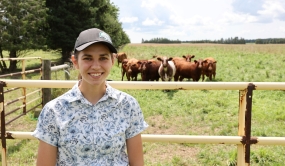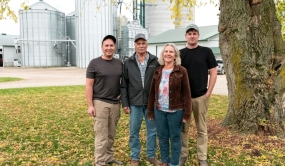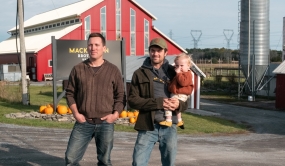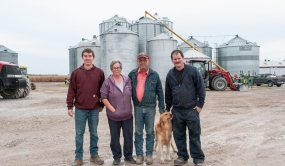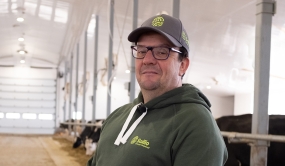High speed composting
To increase their revenues and lend a helping hand with the environment while investing in the future of agriculture, producers are working on methane production. Meet passionate producers discussing energy and how they put their know-how to work.
Many do not believe it, but Ferme Ashton uses manure as bedding under the cows in its herd. The trick is that they compost the manure first to make it into a nearly odourless material and completely free of pathogenic bacteria. As evidence, ever since the farm’s owners have used this type of bedding, the somatic cell count has dropped.
It was during a trip to British Columbia in 2011, on a visit to a producer who manages 3,000 dairy cows, that Gilles Gauthier, co-owner of Ferme Ashton, saw the system that was going to solve the problem that had been giving him a headaceh for a while: how to reduce the costs of wood chip bedding that had reached nearly $70,000 per year for his operation. His farm, in Saint-Léonard-d’Ashton, with 1,400 animals, 600 of which are milking cows, is the second largest herd in Quebec.
The “miracle” system is a cylindrical and rotating bio-composter 9.75 m long (32 ft), called Bedding Master. This device works continuously and composts the manure in only 24 to 48 hours. It churns out high-quality compost made up of 70% dry matter, practically odourless and completely free of pathogenic bacteria.
Compost and comfort
About 80% of the manure produced at the farm is composted, which represents the amount of manure from the 600 cows in the herd. The farm is able to produce all the bedding for the same 600 cows and for nearly all of their offspring. The material is spongy and comfortable and has the appearance of soil. The cows appreciate it and happily lay down on it without causing them knee problems. An investment of $325,000 includes the separator, the bio-composter, the computer system and the building.
To find out more, see the September 2013 issue of the Coopérateur.

